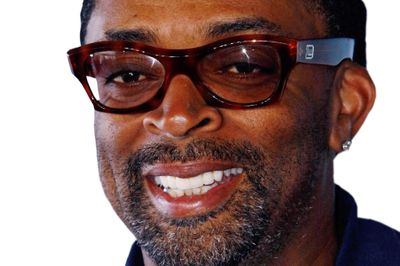Spike’s movie ‘Miracle’
Spike Lee’s avid interest in WWII set the tone for epic film

Spike Lee has made all kinds of films. There have been message movies (“Do the Right Thing”), intimate portraits (“Crooklyn”) and historical epics (“Malcolm X”). But he’s never tackled a war movie – until now. “Miracle at St. Anna,” the story of four black soldiers behind enemy lines in Italy during World War II, is both large in scope and intimately observed. Talking to Lee about making the movie, which opened Friday, is like talking to an engaging film historian. He cares about the details to the degree that he gently repositions a tape recorder during an interview to make sure he can be heard clearly. In other words, he never stops directing.
Q. I’ve read that you had to scramble for financing, but the movie is big in scope.
A. From the very beginning, we were thinking David Lean. “Lawrence of Arabia,” “Doctor Zhivago,” “The Bridge on the River Kwai” – that was the model.
Q. Yet some of the most effective scenes were the small moments.
A. Well, that’s what David Lean was the master of. He would do the great battles and this massive stuff, but then he had these little intimate scenes. He knew how to go back and forth. He did it better than anybody else, I feel. That stuff is hard. It’s like walking a tightrope. You’ve got to find the right balance. Too much … you tip over.
Q. The initial battle scene is the most action-oriented thing you’ve ever done. Was that fun?
A. Yeah, it was fun! I’m not going to lie. My brother, Cinque Lee, he’s my video archivist … he has some stuff of me happy, jumping around, explosions and stuff going off. I’ve never done that before.
Q. The end of the big battle sequence is almost like a smaller version of “Saving Private Ryan.”
A. There’s no way in the world that we could try to equal what Steven Spielberg did – I’m talking about the opening, the 45-minute opening, D-Day, Normandy. That’s amazing. And the battle in our film was not on that scale.
At the same time, people died. There’s brutality, killing. So we had to try to be faithful to what happened. That was the actual location where that battle took place. The massacre at St. Anna, we shot that at St. Anna where the actual massacre took place.
Q. What was that like?
A. It was spooky.
Q. How did you decide to make the movie?
A. My wife, Tanya, gave me James McBride’s book. And I called him up and said, “I want to make this into a film.” I grew up loving World War II films. At the same time, you know, my father was not in World War II, but his brothers were. They drove trucks. They would tell us about World War II. I was hearing these stories in the family, how my uncles were in the war. I wasn’t really seeing that in the movies. “Home of the Brave” came out way before I was born. But we were all elated for Jim Brown in “The Dirty Dozen.”
James gave us a gift. He wrote that novel because of his uncle. It’s very cinematic.
Q. Supposedly you wanted Wesley Snipes but couldn’t get him because of his tax troubles.
A. We wanted Wesley Snipes. “Do the Right Thing,” I wanted Robert De Niro to play Sal (a role that instead went to Danny Aiello). It works out for the best, you know?
Q. The boy in the film, Matteo Sciabordi, is great. How was working with him?
A. Even though I’d never done a war film, I knew I could do the battles. The wild card was, we had to get the right kid. If we did not get the right kid, it would be shaky.
Matteo had never acted before. He was one of 5,000 kids who came out for the part. I say that he’s just as good as the kid in “The Bicycle Thief.” But for me, this film is in the direct lineage of those great Italian post-war neo-realism films. “The Bicycle Thief;” “Miracle in Milan;” “Rome, Open City;” “Paisa;” “Shoeshine;” “Germany Year Zero.” All those great films by Roberto Rossellini and Vittorio De Sica.
Q. When you’re shooting, are you thinking about these films? Quoting this or that?
A. No, (but) there are certain things I quote on purpose. The opening of the film was a quote, by showing John Wayne in “The Longest Day.”
That scene was not in the novel. But I told James we have to have Hector Negron late at night, home all alone, his wife has died, watching TV. And watching John Wayne in a World War II film and have him say this line. “Pilgrim, we fought in the war, too.”
Because James did a lot of research talking to a lot of vets, talking to men who were specifically in the 92nd division, and they are still not happy about their diminished role or the complete omission of the 1.1 million African American men and women who contributed to the war effort.
Q. I guess it had to be John Wayne.
A. When you think of World War II, we think of John Wayne. We think, John Wayne is that guy. That’s Mr. America, whether he was kicking Japanese butt or Nazi butt or in one of John Ford’s Westerns, killing the “dirty savages” – put that in quotes. That’s John Wayne. That’s America.